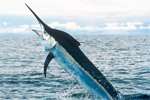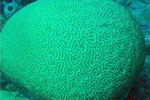View Larger Map
Komodo Island in Indonesia.
Illegal fishermen have been utilizing homemade bombs to kill fish off the coast of Komodo Island, Indonesia, reports the Associated Press (AP); the bombs have not only injured fish populations in the protected area, but has also blasted biodiverse coral reefs popular with tourists. A scuba teacher told the AP that a section of Tatawa Besar coral reef, a popular diving spot, had been “blasted, ripped off, turned upside down.”
According to the article, bomb fishing has become more common along the island ever since conservation NGOs, the Nature Conservancy and Putri Naga Komodo, were forced out of managing the park due to a dispute with the government over how money from fees should be applied. The NGOs wanted park fees (which they raised for foreigners) to go back into the protected area, while the government fought for the funds being moved into a general fund. The NGOs were exited in 2010, leaving the government to manage the over 200,000 hectare park.
However, the head of the park says they are successfully enforcing the law, noting rangers have arrested 60 illegal fishermen in the last two years. One fisherman was killed recently by rangers after a group of fishermen threw their homemade bombs at rangers.
Illegal fishing, which is a widespread problem in Indonesia, is believed to cost the country $4 billion annually and undercut local peoples’ access to protein.
Komodo Island is most-famous for sporting the world’s biggest lizard, the Komodo dragon (Varanus komodoensis).
Related articles
New book series hopes to inspire research in world’s ‘hottest biodiversity hotspot’

(01/17/2012) Entomologist Dmitry Telnov hopes his new pet project will inspire and disseminate research about one of the world’s last unexplored biogeographical regions: Wallacea and New Guinea. Incredibly rich in biodiversity and still full of unknown species, the region, also known as the Indo-Australian transition, spans many of the tropical islands of the Pacific, including Indonesia’s Sulawesi, Komodo and Flores, as well as East Timor—the historically famous “spice islands” of the Moluccan Archipelago—the Solomon Islands, and, of course, New Guinea. Telnov has begun a new book series, entitled Biodiversity, Biogeography and Nature Conservation in Wallacea and New Guinea, that aims to compile and highlight new research in the region, focusing both on biology and conservation. The first volume, currently available, also includes the description of 150 new species.
Featured video: Google Earth highlights imperiled coral reefs around the world
(04/18/2012) A new video by Google Earth and the World Resources Institute (WRI) highlights the world’s many endangered coral reefs. A part of the WRI’s Reefs at Risk program, the video highlights regional and global threats to the oceans’ most biodiverse ecosystem. According to the WRI, a stunning 75 percent of the world’s reefs are currently threatened.
Whole Foods bans ‘red’ fish from its stores

(04/10/2012) Whole Foods has announced it will be the first grocery chain in the U.S. to no longer sell any seafood in the “red.” Based on sustainability ratings by the Monterey Bay Aquarium and Blue Ocean Institute, fish labeled red are those that are considered either overfished or fished in a manner that impacts other species or damages marine ecosystems. Beginning Earth Day, April 22nd, Whole Foods will no longer be selling Atlantic halibut, grey sole, skate, octopus, tautog, sturgeon, among others. Already, the store doesn’t sell some unsustainable catches such as bluefin tuna and orange roughy.
First global assessment finds highest-grossing tunas and billfishes most vulnerable to extinction

(11/09/2011) Sleek, powerful tunas and billfishes that ply the open ocean garner some of the highest prices of any fish. In January, a single bluefin tuna fetched a record $396,000 at a Tokyo auction. Yet wild fish populations pay a still higher price for such exorbitant demand: the threat of extinction. The first assessment of an entire group of commercially valuable marine species found that the most threatened fish are generally the ones reeling in the most money, including bluefin tuna and bigeye tuna.
Researchers challenge idea that marine reserves promote coral recovery

(11/09/2011) Fleshy whorls of thick brown algae blanket the once-vibrant corals in Glover’s Reef, Belize. According to a controversial study published August 14 in the journal Coral Reefs, a decade of marine reserve protection has failed to help these damaged Caribbean corals recover.